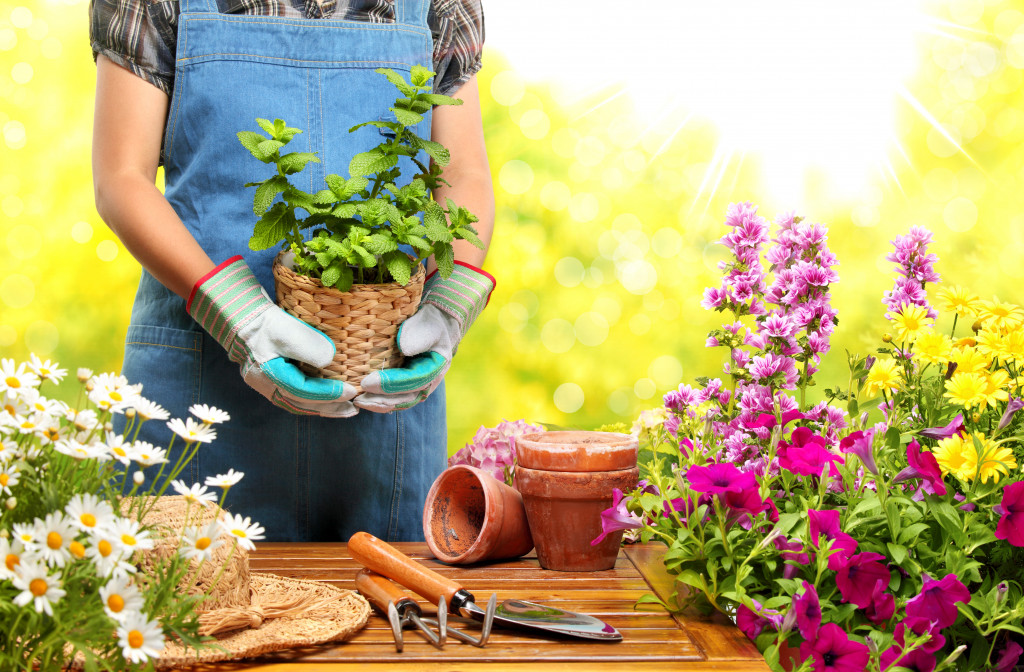Lovely gardens can bring peace of mind to any homeowner. The bloom of the flowers and the lush greenery makes everything come to life. When you’re in a garden, serenity can envelop you like there’s no pandemic around.
Unfortunately, though, not all plants can survive the outdoors come wintertime. And since winter is just around the corner, you need to bring your lovely plants indoors. It would be best if you prepared special places for them.
But first, know which plants should be brought indoors during winter.
Plants That Can’t Survive Harsh Cold Temperatures
Many plants and trees can’t survive winter. Fortunately, if you have them, you can bring them inside your house where you can take care of them properly.
Tropical plants are first on your list. Angel’s trumpets and hibiscus are some examples of large tropical plants that should be brought indoors. Delicate trees such as citrus, annual plants, and tropical bulbs are also winter-sensitive. If they’re potted, it’s easy to bring them inside your house. If you plant them on the ground, cover them with burlap.
There are also low-maintenance plants that are winter-hardy when they’re indoors. You can practically leave them alone, but they will still survive. These plants include Chinese evergreen, snake plant, moth orchid, ponytail palm, maidenhair fern, jade plant, philodendrons, wax plant, and fiddle leaf fig tree. Succulents, cactus, and all desert plants also survive best during winter if they’re placed indoors.
Once you’ve collected your winter-sensitive plants, it’s time to plan where to place them indoors.
1. Top Shelves
Have you noticed how top shelves are often empty? Well, it’s time to take advantage of that available space. You can put your potted plants on top of your shelves. They can be a perfect fit up there without distracting you from the other contents on your shelves.
Choose trailing plants that can be put on top of shelves. As they grow, they can trail downwards on your shelves.
2. Bookcases
Bookcases often provide the perfect spot for small potted plants such as succulents. When you use the top of your shelves, you put plants up there side by side. They’re put together, creating a collective look. With bookcases, however, you can put plants separately. You can place one pot on a shelf and another one on another shelf.
As an alternative, you can build an open-back bookcase where you can put your plants. This is a great way to display your plants while adding another layer of privacy in a room.
3. Room Divider
You can use your tall plants as a room divider, too. You can simply put them in the middle of a large empty space, and now you have two separate areas. It’s like having an indoor garden in the middle of your house.
The plants used as room dividers can include snake plants, ponytail palms, and fiddle leaf fig trees. If you have small tropical trees, provided they’re potted, you can also put them there.
You can also use the open-back bookcase suggested earlier as a room divider.
4. Sunroom

Sunrooms aren’t exactly a greenhouse, although sometimes they’re thought to be that way. They are the best place to put your plants indoors, considering all the natural light they get from large windows and glassed ceilings. Plus, they trap in heat that can be good for your plants that hate cold weather.
While you can’t build one on your own, you can look for professional sunroom contractors who can do the job for you.
5. Staircase
You can liven up your staircase with plants, too. Put some tall plants or a tree in the corner of a landing. A fiddle leaf fig tree or rubber plant can create a focal point when put in a corner.
You can also add potted plants along the edge of each stairway. You can also hang plants on the balustre.
If you don’t have a staircase, you can use a ladder instead. Prop it up against a wall and hang plants as you like. Or, you can also use a ladder-style bookshelf where you can place potted plants.
6. Walls and Ceiling
Aside from top shelves, you can also put trailing plants in hanging pots and hang them on walls or your ceiling. Climbing and hanging plants are also ideal for these spots.
7. Wall-mounted Shelves
You can install shelves on your walls to create a space for your plants. This is one of the best ways to create an indoor garden, too. Because of the versatility of wall-mounted shelves, they can house potted plants, and if you add some hooks, you can hang plants there, too.
You Need Plants in Your Life
The cold season can often bring an air of sadness. If you have plants, however, you can turn this around. You’ll feel happier and livelier.
However, to take care of your plants, especially those that can’t survive winter, you need to put them in a place where they can stay. This way, even if it’s gloomy outdoors, you will still feel lighter when you see your plants indoors. Follow these tips, and you will surely make winter a livelier season.











